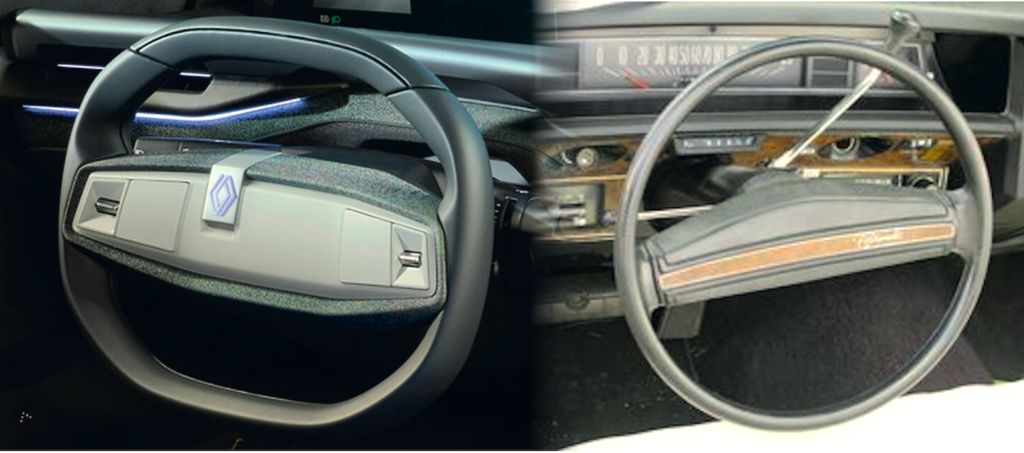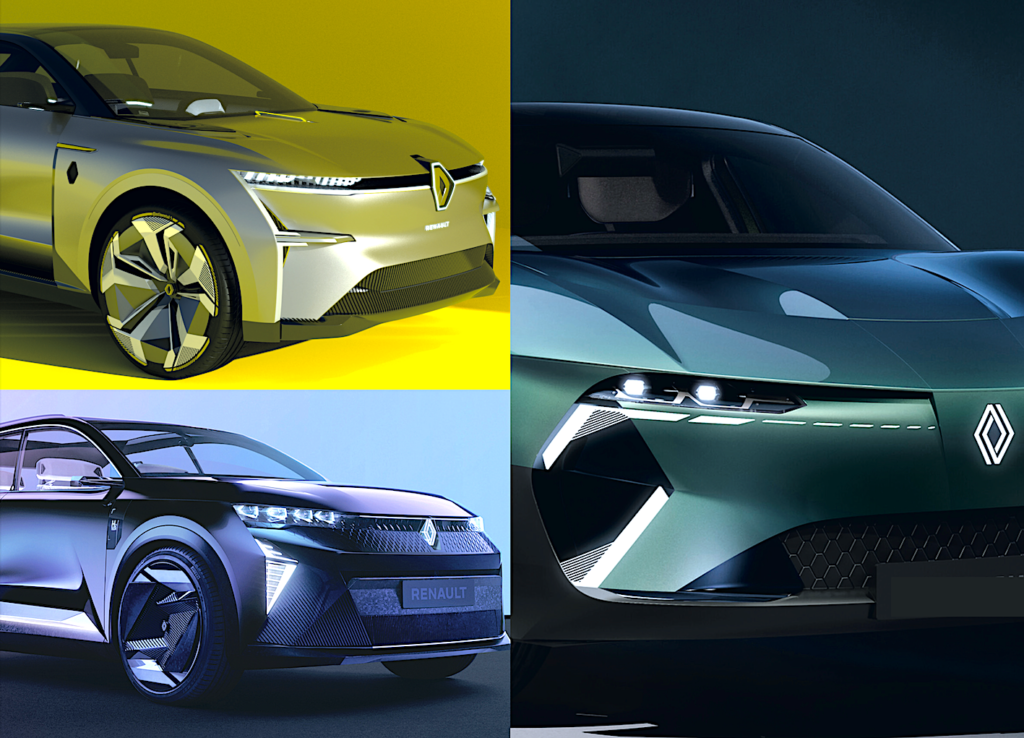
What remains of the concept cars presented over the years by the various manufacturers? They are sometimes forgotten as quickly as a fleeting moment of happiness, and yet they carry within them the genes of tomorrow’s cars. That’s their role. So let’s take advantage of the presentation of the Renault Emblème concept to go back in time a little, and highlight the innovations of the brand’s three latest concepts, which target more or less the same segment.
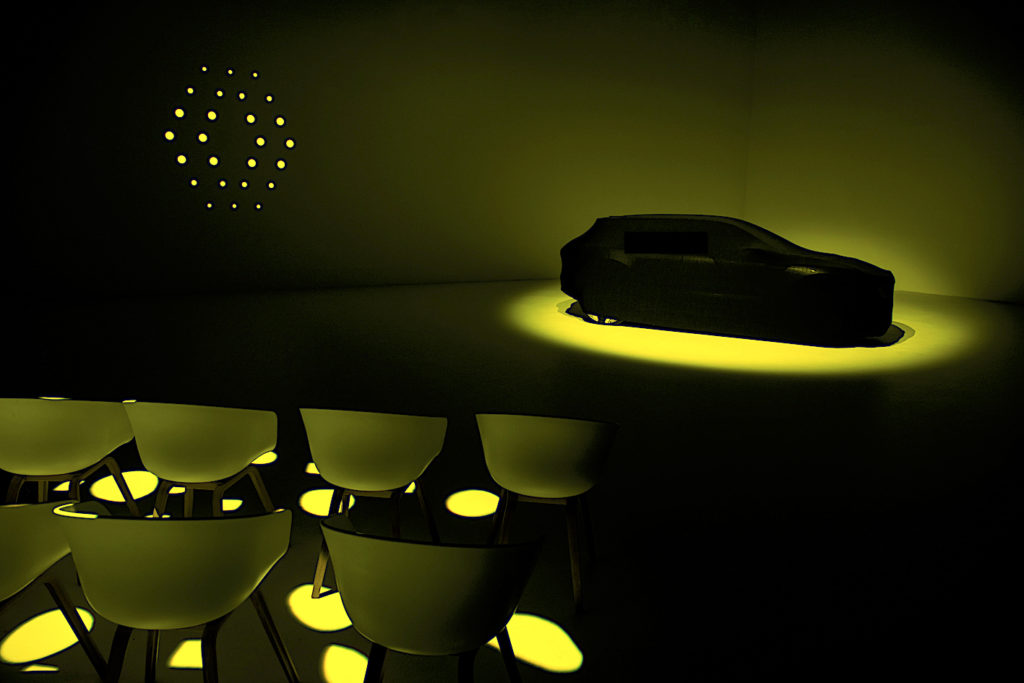
The Renault Morphoz of 2020 and the Scécnic Vision of 2022 emerge from their short hibernation to discover with us their brother Emblème. ‘Which of us inspires the other? Which of us speeds the other ?’ sings M. in France. We’re in tune with the theme…
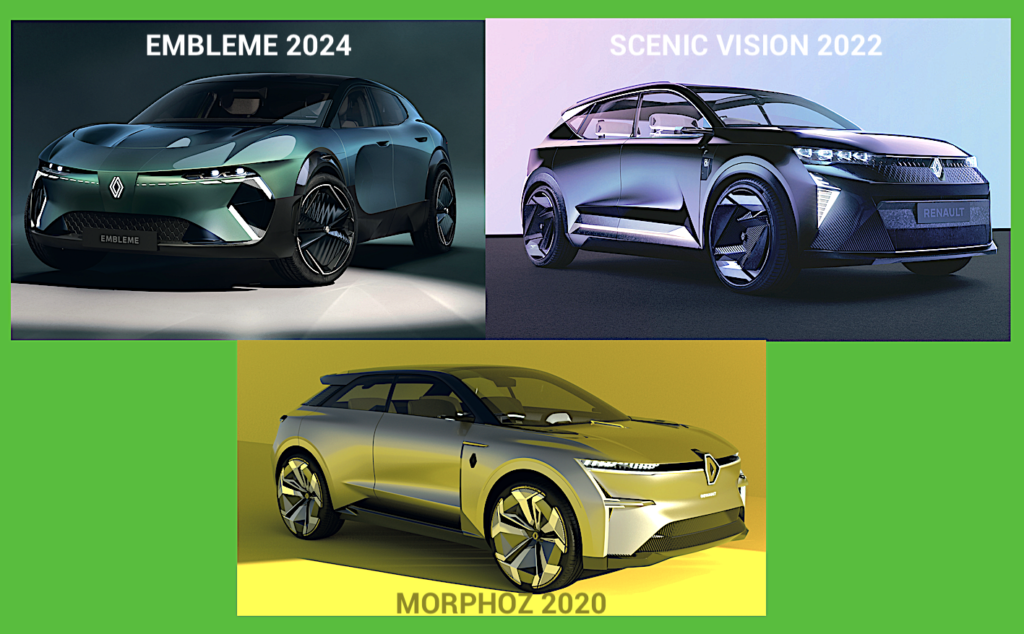
In 2020, at the height of the Covid pandemic, François Leboine – then head of Renault concept cars and now head of design for the Fiat brand at Stellantis – explained to us at the presentation of Morphoz that his team aimed to ‘create the most beautiful concepts possible that tell the most interesting stories possible. What’s different about a production programme is the purity of the design, which we push to the limit because we avoid industrial constraints and compromises. It’s all about the pleasure of the concept, of telling a story with a design that isn’t about compromise, because a concept car is anything but a compromise!’

Morphoz, for those who had ‘aqua-poney’ when it was unveiled, is a sort of pre-phase of a compact crossover, about the size of a Scenic, 100% electric and which has the particularity of changing its silhouette depending on whether it is used in an urban or motorway context. The front and rear sections are getting longer, while the interior is getting more spacious.
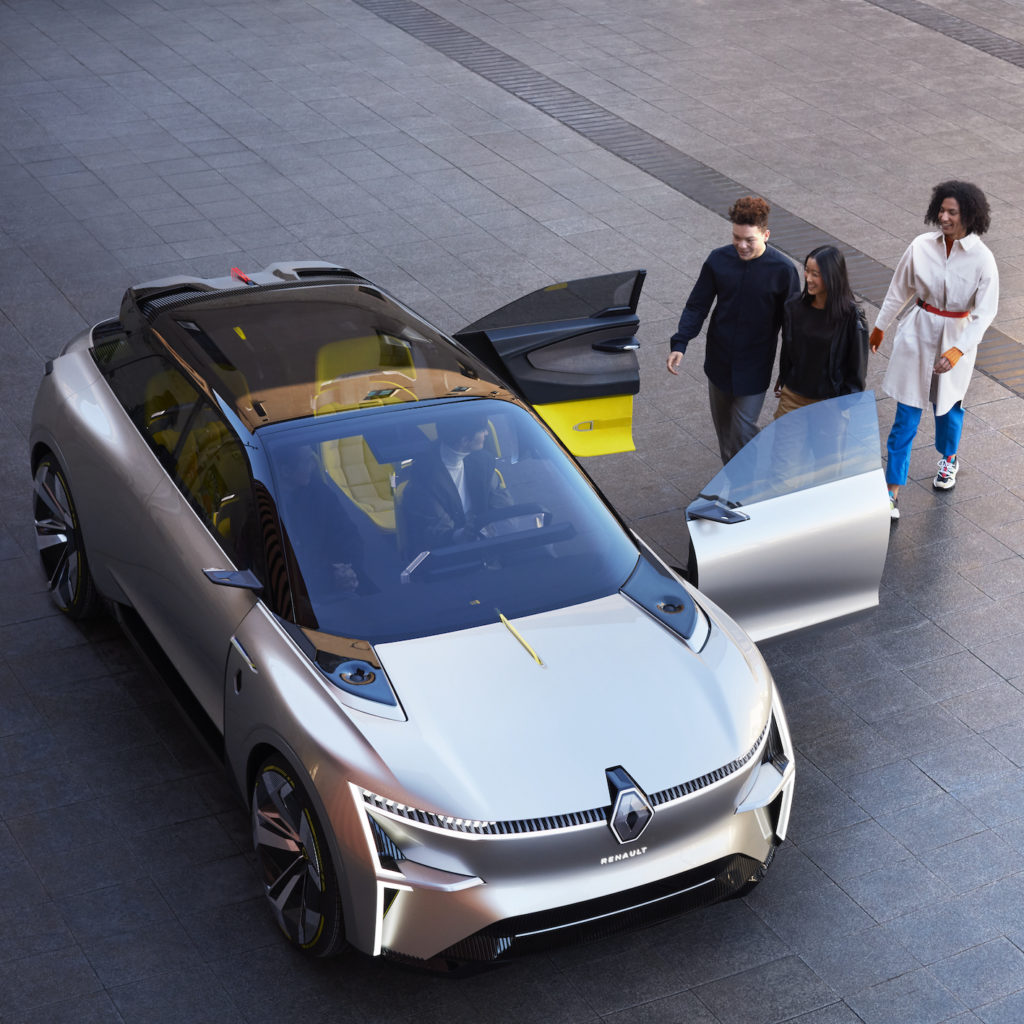
‘We started from this idea of exploring the family with a vehicle that is animalistic, with a great capacity to adapt to our uses, all in a changing environment. Ultimately, this concept is consistent with a future in which the vehicle must adapt to our environment. Morphoz is based on a reasoned approach to the automobile, where we ask ourselves what is needed, what is necessary and what is the capacity to adapt ’, explained François Leboine. ‘From the outset, the idea was to think about use, with a contemporary family: as it has variable geometry, we made the car that goes with it, which also has variable geometry.‘

On board, many of the recipes developed by Renault since the 1970s, such as the passenger seat that flips over, are used in a colourful ambience reminiscent of the Citroën CXPerience concept car unveiled two years earlier.
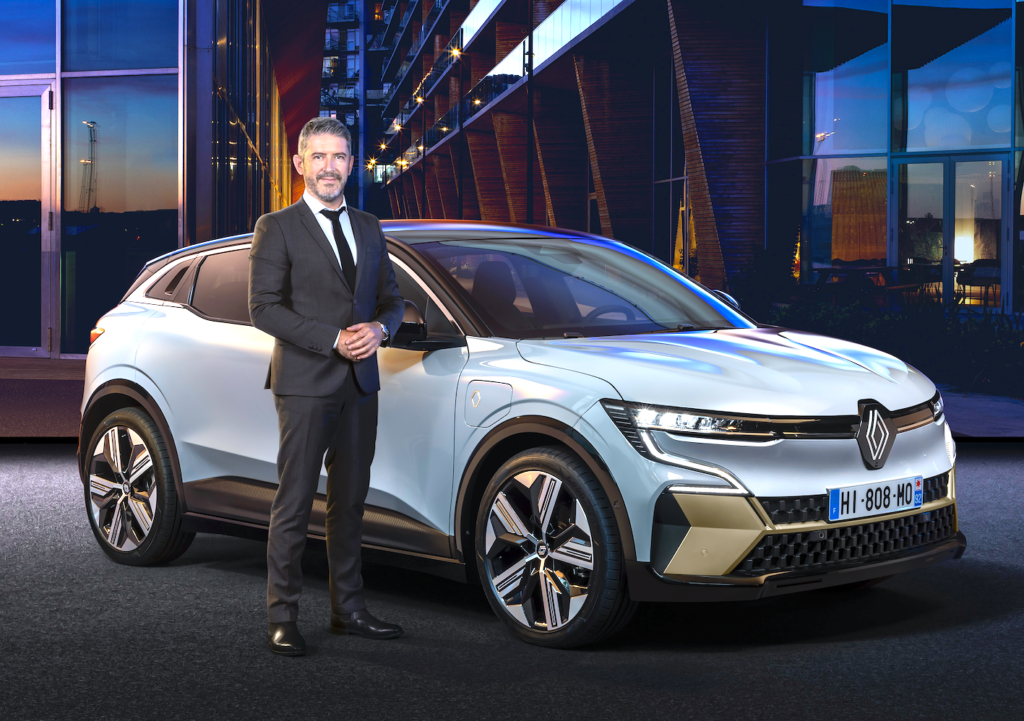
What remains of this concept four years later? First of all, a formal language that was used to dress the Megane E-TECH, which went on sale in early 2022. But in the meantime, Gilles Vidal (above with the Megane E-TECH) took over as head of design for the Renault brand in 2020, and he brought with him the excellent man in charge of Peugeot concept cars at the time (Sandeep Bhambra). The no less excellent François Leboine (below, now with Fiat) has migrated to his rival. The previous design had to be carefully reworked, and the formal language of Morphoz was a thing of the past.
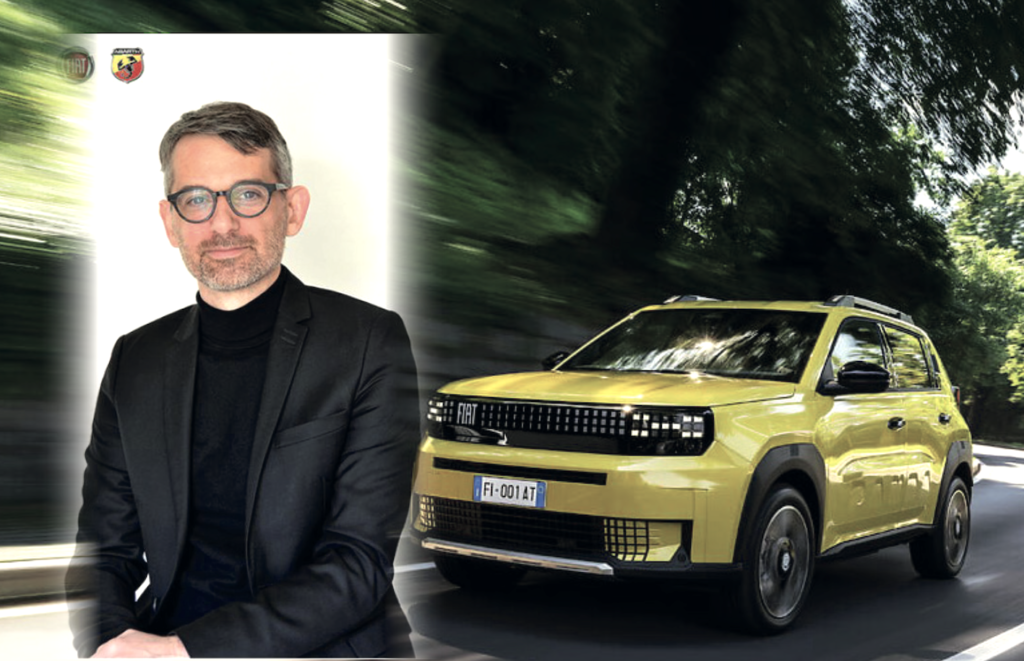
However, it’s no insult to write that there’s a bit of a Morphoz phase advance in the second concept car aimed at this C-segment crossover (SUV?) segment: the Scenic Vision of 2022 below. This is virtually a preview of the design of the production Scenic that will go on sale a year later. However, Gilles Vidal told us that ‘this Scénic Vision concept car is the first real expression of the new team’s vision’. As for the light signature, it’s obvious…
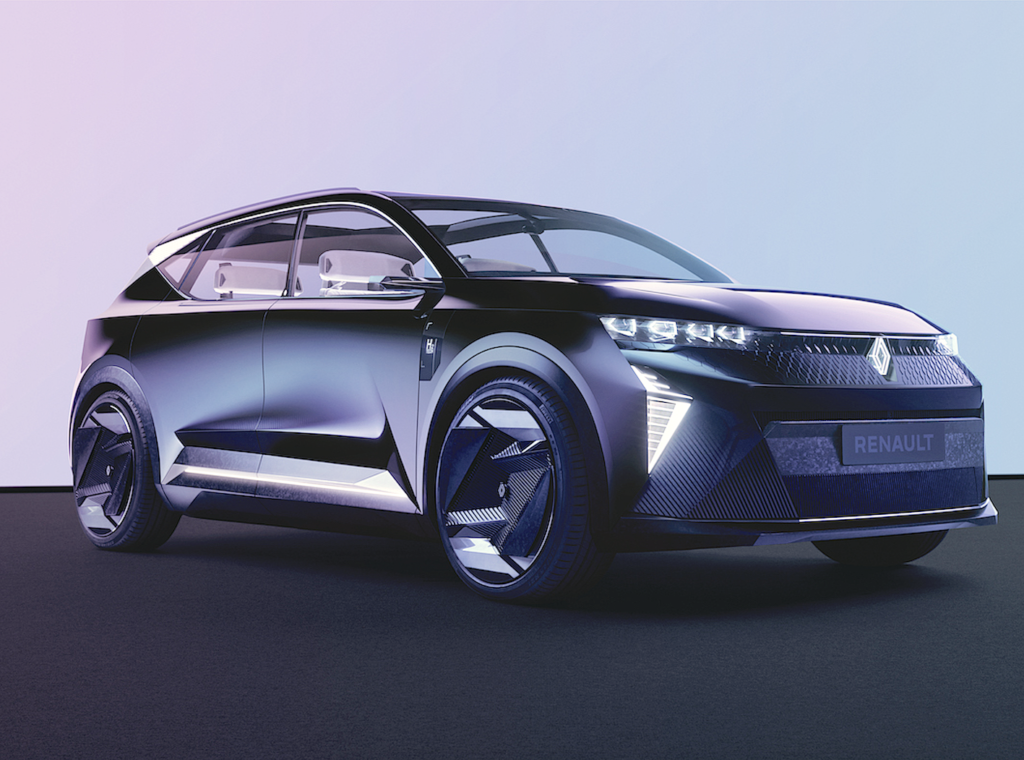
As François Leboine so rightly said in 2020, ‘we don’t write the same stories with the same answers and the same objects’. The story of the Scenic Vision is therefore the story of Vidal and of a new page in Renault design that opened with the arrival of the Peugeot design boss in Guyancourt. We can now say that the Vidal label, as seen in his early work, had a hint of Lion. It was conceived in a hurry to respond to Luca de Meo’s demands to broaden the product range in a C segment where the brand had previously struggled.

And the operation has gone far beyond that (above) if we compare Renault’s product plan with that of its competitors. In less than four years, the carmaker with the diamond-shaped badge – redesigned for the occasion – has unveiled and/or marketed its R4, R5, Twingo, Mégane E-TECH, Scénic E-TECH, Austral, Espace, Rafale, Captur, Symbioz if my memory serves me right…

The Scénic Vision of 2022 above is obviously very different from the Morphoz born two years earlier. Apart from a design that lays the foundations for a formal language that the recent Emblème concept is set to transform, the passenger compartment seems much more techno-savvy than Morphoz’s modular cocoon. For example, there is the information screen that runs the length of the vehicle. But unlike the screen in the Emblème, the one in the Scénic Vision has been pushed right up to the base of the windscreen.
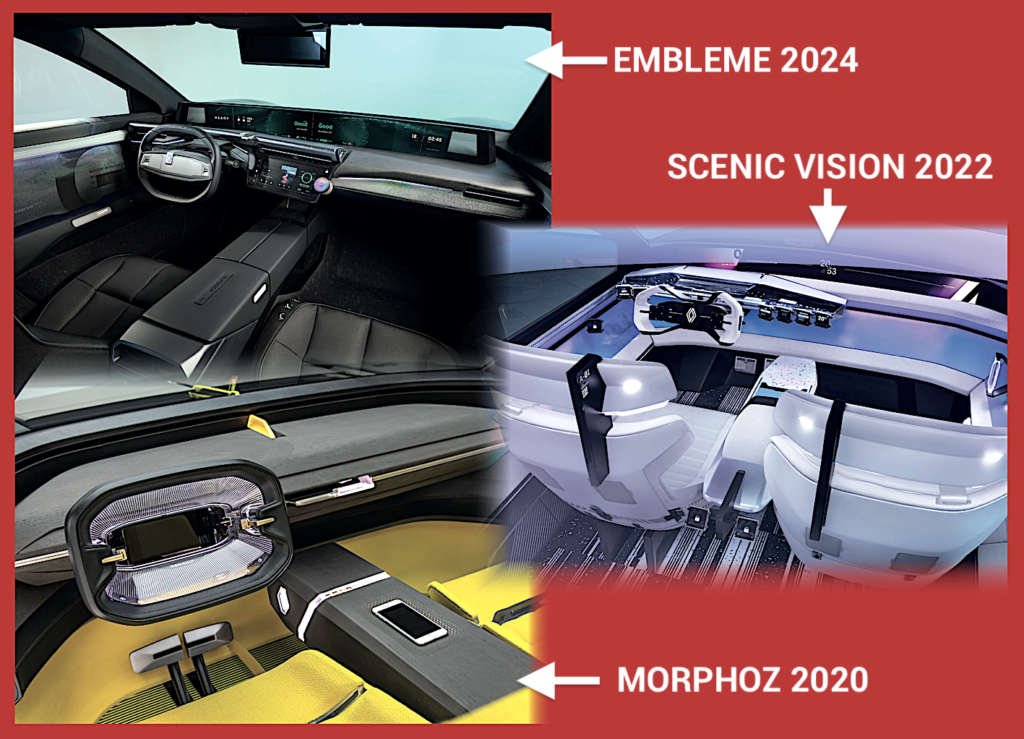
Two thoughts on this point:
1- the Scénic Vision looks more modern than the Emblème by pushing this screen as far away from the driver’s view as possible, to the very base of the windscreen. To the credit of the Emblème concept car, its windscreen structure is undoubtedly closer to that of a production vehicle, even if Renault assures us that the concept will remain in the (unique) manifesto stage.
2- the Scénic Vision highlights the progress made in glazing, which in the short term will be capable of being projected directly onto a dedicated coating at the base of the windscreen. BMW’s Neue Klasse unveiled in Munich in September 2023 featured this famous projection across the entire width of the windscreen. The question of projecting images onto glass is obviously of great interest to designers. But it’s not the one chosen by the Emblème, which retains a screen. This industrial reality confirms that the spirit of this dashboard should soon see the light of day.

This is a far cry from the Morphoz concept , which introduced the now-famous L-shaped screen that appeared on the Megane E-TECH and Austral. In the 2020 concept car, this screen was positioned close to the driver (see below), but was able to fold up and disappear into the dashboard in autonomous driving mode. But there’s not much talk of autonomous driving these days…
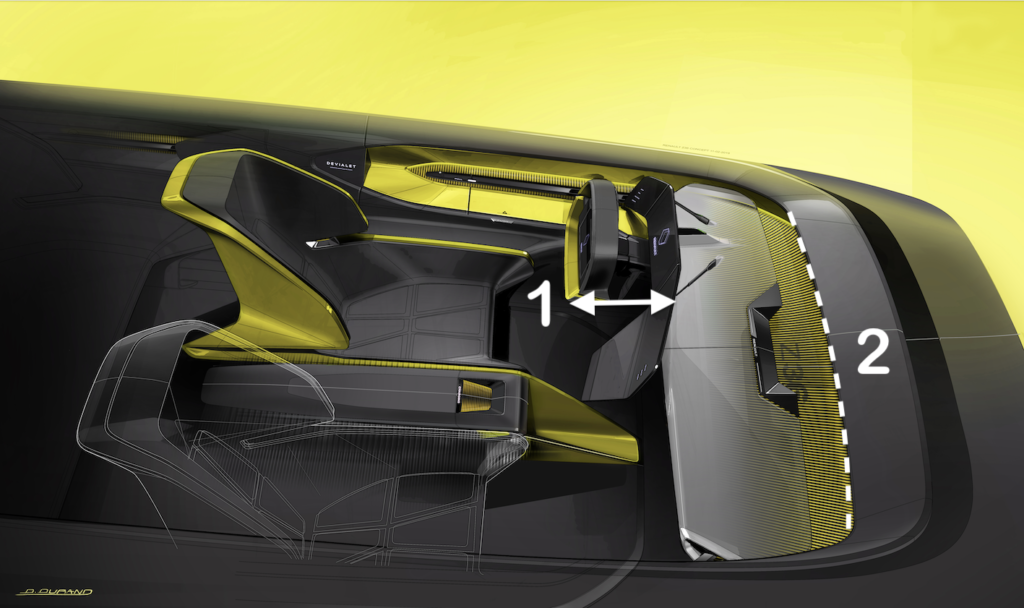
The Scénic Vision concept car explored a forward-looking design that Renault officially announced for 2028. However, the Emblème of 2024 sets the tone for the interiors of future Renault cars from 2026 to 2030. Not much of the interior of the Scénic Vision can be found here… In the latter, widgets were the order of the day, but the concept of scattering multiple small screens seems not to have been retained for the future… Perhaps time will tell.
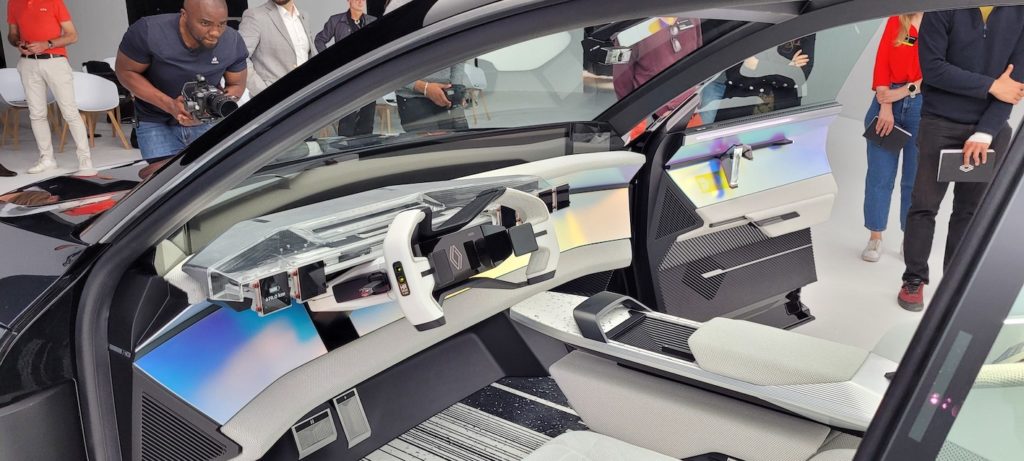
So what we wrote in 2022 is no longer entirely relevant: ‘On board the concept car, we are no longer in the Scénic of 2024, but travelling to 2028. This forward-looking interior, still designed with the circular economy in mind and using recycled and recyclable materials, will appear in whole or in part in future models.‘ Apparently not, judging by the more sober interior of the Emblème concept below.
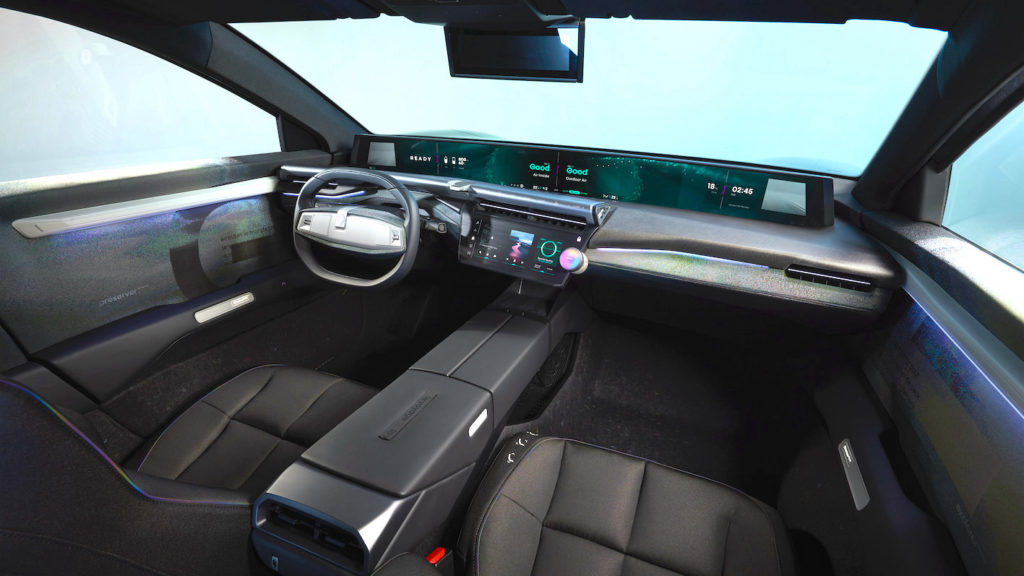
However, the Scénic Vision concept does have one thing in common with the Emblème: its powertrain architecture , with an electric motor at the rear, powered by a combustion cell (also at the rear) and a hydrogen tank at the front.
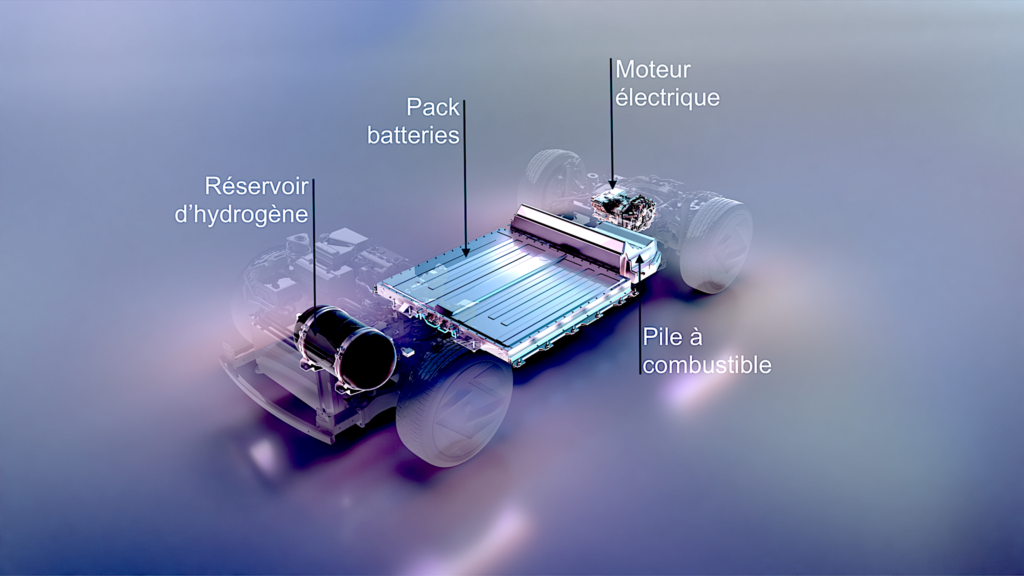
You might say that we’re moving away from design, but in fact we’re not: designers are eating their hearts out with 100% electric EV platforms (EV motor and batteries only) and will be much more upset by the cumbersome fuel cell and hydrogen powertrain, if it’s ever planned for more than just commercial vehicles. Let’s close the parenthesis…

The three concept cars differ markedly in terms of design and on-board materials. On the Scénic Vision, the materials are highly ‘technical’ and the door panel, for example, is covered in a dichroic material which, when in contact with light, transmits variations in colour depending on its environment above.
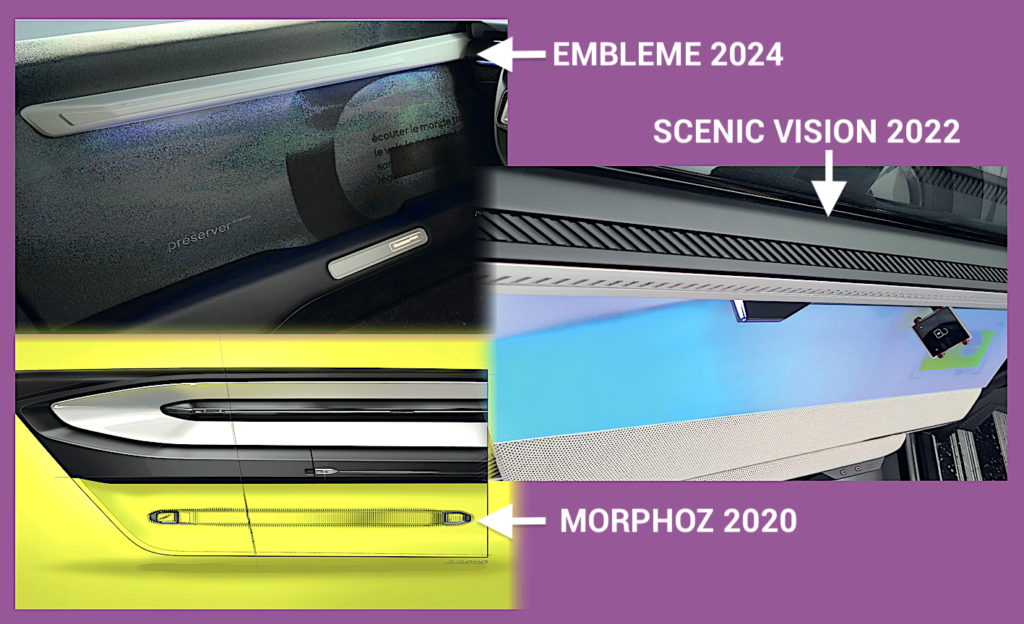
On board the Emblème, there is a return to warmer materials, mainly fabric. This doesn’t detract from the technology, however, as information can be broadcast through the fabric, including controls. This is something that BMW also highlighted on its iNext concept car below in 2018.

In the Emblème concept, we find more warmth on board, more fabrics and materials that we could just as easily find at home, in our living room. These are the new directions arising from research into vehicles with driver delegation (being at home on board) and, at the same time, research into the durability of these materials, the vast majority of which are recycled and are, of course, themselves recyclable. Below, the door panel of the Emblème concept.
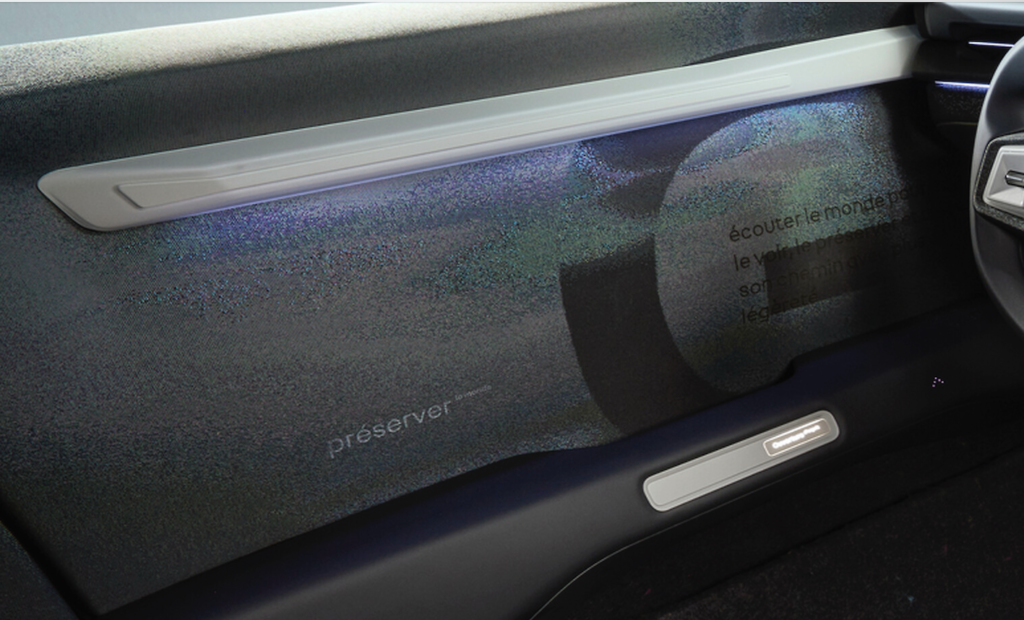
Forget the two previous concept cars, Morphoz and Scénic Vision, and focus instead on the Emblème below, which defines the new formal language of future Renault cars. The REAL Vidal signature, as it were. There’s more simplicity on the flanks (note the suppleness of the embossing, which abandons the frank and rigid edge lines) and – on this concept – a ‘shooting brake’ silhouette. The glazed area is as limited as ever compared with that of the sheet metal parts. The large spoiler at the rear of the roof is now compulsory on EV vehicles seeking the most efficient aerodynamic coefficient…
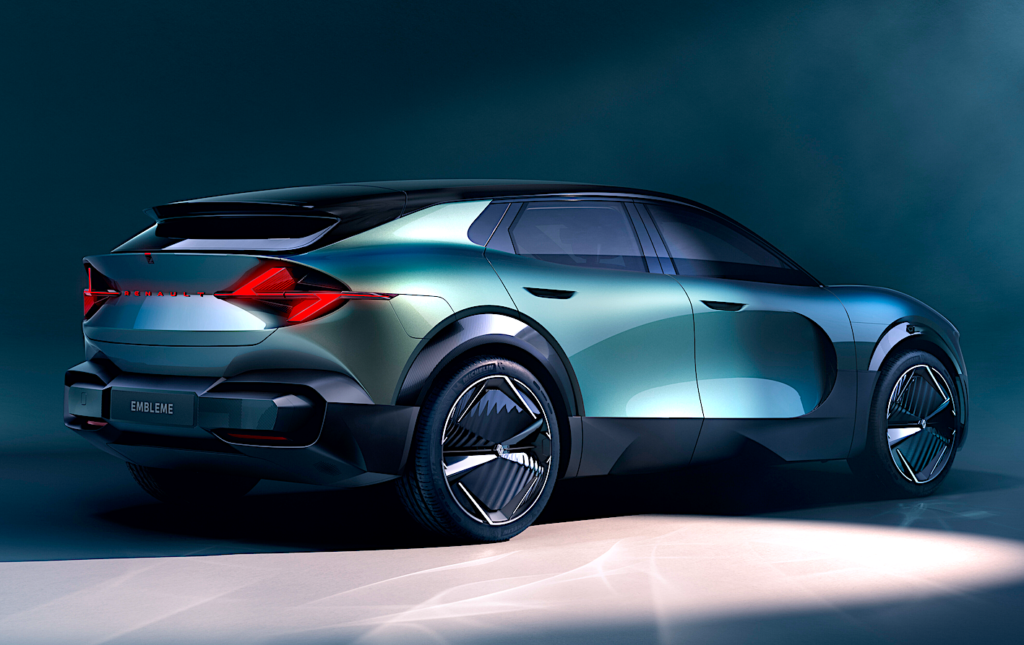
While we’re not crazy about the front lip that supports the logo, we do like the new formal language of the light signature below, which plays with the geometry of the Renault diamond at the front and rear. A more elegant concept than the current one, which is rather complicated, although very effective at the time of the Clio restyling.
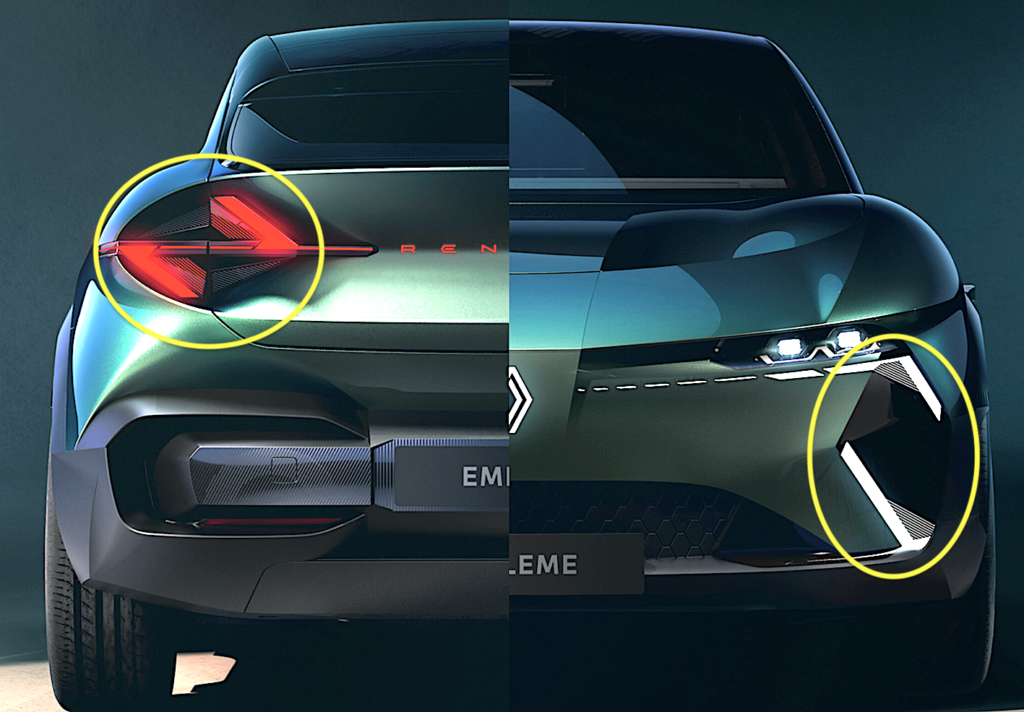
The comparison of these three concept cars is obviously polluted by the changes that have taken place at Renault in the design teams between 2020 and today. Nonetheless, it serves as a reminder of the importance of these manifestos which, even if they do not all hold the truth of tomorrow, open many doors, some of which lead to new worlds for the series. Which of the three do you prefer?
BONUS: WHAT ABOUT THE STEERING WHEELS?
In 1970, the steering wheel on the Citroën SM caused quite a stir with its flattened shape and single spoke. The shape was symbiotic with the oval shape of the speedometers. Today, steering wheels have not been round for some time. They are increasingly taking on a rectangular shape with rounded corners.
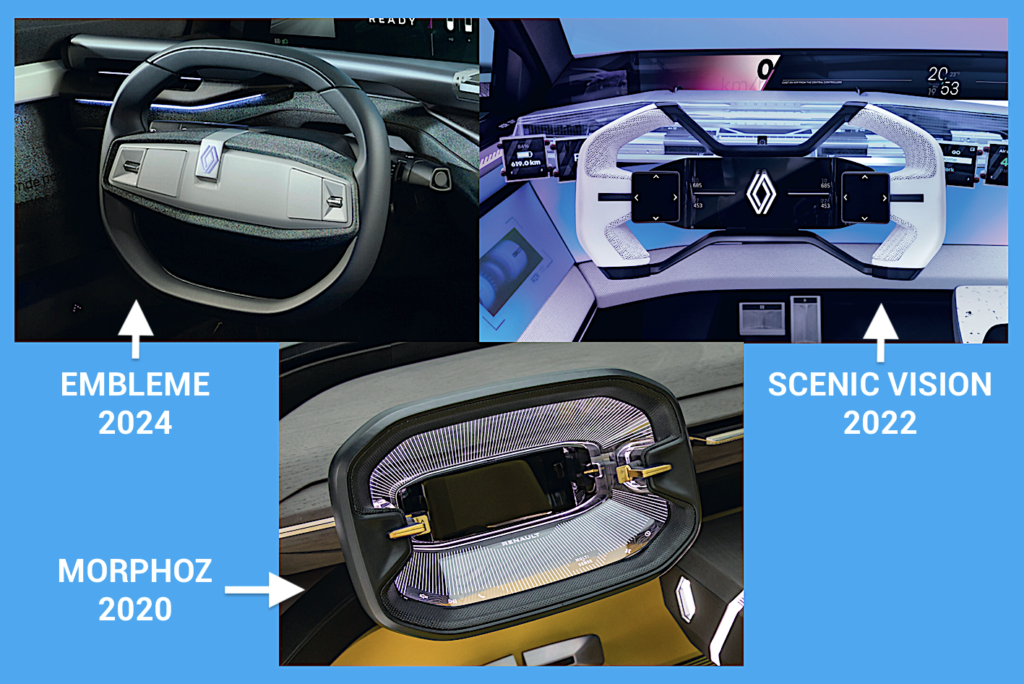
The steering wheel on the Morphoz concept featured a rather ‘techno’ luminous crystal glass hub, while the one on the Scénic Vision would have looked right at home in… an Alpine! The steering wheel on the Emblème concept is much cosier and reassuring. It features the Renault logo at the top, on a sort of beak, like the front logo on the bodywork. The steering wheel even has a touch of vintage about it, with its large, single horizontal spoke that could be found in the late 1970s on certain American cars, such as the Chevrolet Caprice, below. ‘Gilles and Sandeep, we’re in complete agreement, retro design is for R4s, R5s and Twingos, right?!’
